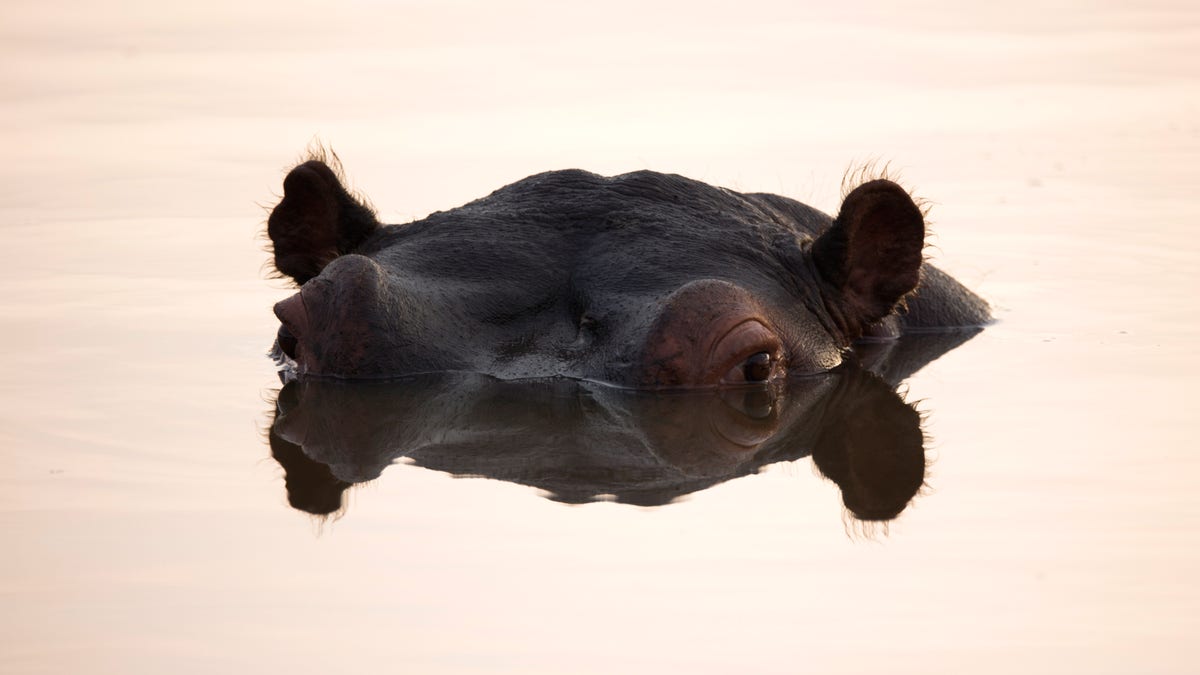
LOWER SABIE, SOUTH AFRICA - JULY 08: A Hippopotamus breaches the water in a pool in Kruger National Park on July 8, 2013 in Lower Sabie, South Africa. The Kruger National Park was established in 1898, and is South Africa's premier wildlife park, spanning an area of approximately 2 million hectares. (Photo by Dan Kitwood/Getty Images) (2013 Getty Images)
Twenty years ago, Medellín, Colombia, had all sorts of other problems. Now, with its most infamous resident, drug lord Pablo Escobar, long dead, the city is struggling to contain one of his legacies: wild hippos.
It all started with three females and one male that he smuggled – because he could – for his children’s enjoyment. Along came elephants, giraffes and other exotic animals, with which he filled a zoo at his residence, Hacienda Nápoles — an estate that covered 7.7 square miles halfway between Medellín and Bogotá.
After Escobar was killed in December 1993, Hacienda Nápoles was turned into a park area, and Colombian authorities found homes for all the animals except the hippos, which can grow to 3,000 lbs and so aggressive and ill-tempered that they are often regarded as the most dangerous mammals in Africa.
Two decades later, it is estimated that there are between 50 and 60 wild hippos roaming the Antioquian countryside, most living in four of the 12 man-made lakes at the park. But at least a dozen hippos are known to have wandered past Hacienda Nápoles’ perimeter and into the nearby Magdalena River, terrifying local residents and wreaking havoc on crops and cattle.
Back in March, the Interagency Wildlife Committee of Antioquia (CIFFA) warned about the declining population of hippos in the estate and estimated the number that had migrated to other areas actually hovered around 40.
David Echeverri, a biologist with the committee, said they’ve been sighted as far as 155 miles away from Nápoles, according to the BBC.
There's been talk of moving the hippos back to Africa, but that isn't entirely practical because they may carry disease. And zoos are typically not interested in acquiring adult specimens.
Local ecologists consulted by the BBC say that creating a reserve with hippo-proof fences would cost about $500,000, and castration would be even more expensive.
Some, including the Department of Environmental Affairs, are openly advocating killing the creatures.
“What are farmers to do with so plump a threat? How to solve the dilemma of investing 5 billion pesos [around $2.7 million] a year to care in for the Nápoles hippos, while outside thousands of children are starving?” wrote recently Op-Ed contributor Sonia Gomez in El Tiempo, Colombia’s top newspaper.
“The measure, before the problem becomes impossible," she concluded, is "a dignified death.”
International experts from the World Wildlife Fund and the Disney Foundation, who visited the area in 2010, said the situation is a “time bomb” that has to be addressed.
However, some fear the backlash such a measure would spark. In 2009, two adults and one calf escaped the herd and, after attacking humans and killing cattle, one of the adults (called "Pepe") was killed by hunters under authorization of the local authorities. The hunt for two other hippos, a female, Matilda, and her calf, Hip, was called off.
"We do not want to choose the easy option and give the world this negative image, not with such a charismatic animal," Echeverri told the BBC.
"The country is changing the image it gives the world - we don't want to be in the headlines for such a story."
Follow us on twitter.com/foxnewslatino
Like us at facebook.com/foxnewslatino
